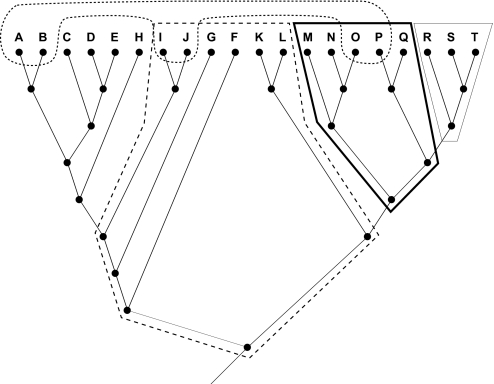Fig. 1.
Diagrammatic representations of monophyletic, uniparaphyletic, multiparaphyletic, and polyphyletic morphogenera. A named genus is monophyletic with respect to a molecular cladogram, if it is completely congruent with the molecular topology (light polygon: taxa R, S, and T). Nonmonophyletic genera correspond to clades in the molecular cladogram that also contain some members of other genera. A uniparaphyletic morphogenus is one where monophyly is broken by a single branch placed in a different genus (bold polygon: taxa M–Q): this uniparaphyletic group could be made monophyletic by adding the single branch uniting the clade (R, S, T) to the named genus. A multiparaphyletic morphogenus is one where the ancestral state of the basal node is the genus name, but where multiple named branches must be added to the named genus to render the group monophyletic (dashed polygon: taxa I–L, which requires clades (A–H) and (R, S, T) for monophyly). A polyphyletic morphogenus is one where the primitive state of the node defining the last common ancestor is not the genus name (dashed irregular shape: taxa A, B, I, J, O, and P). See ref. 42 and Methods for further details.

